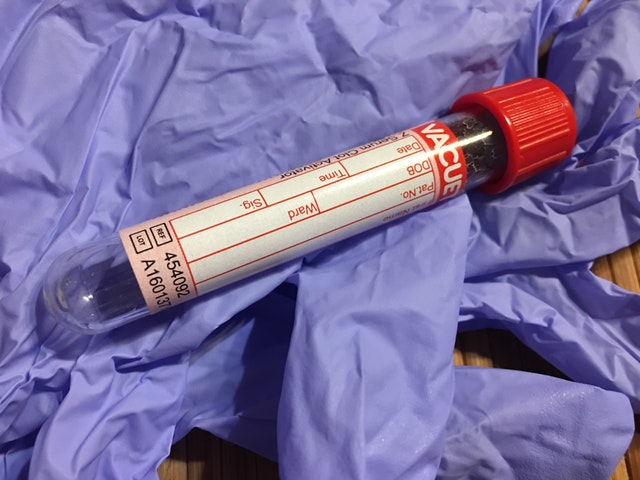The procedure known as dialysis has been created so that the elimination of toxins and the excess of liquids in the body is possible; a function that, in healthy patients, carries out the renal system (kidneys, in particular.) Even though dialysis is so far the best-known option to treat kidney disease, and despite the fact that the biomedical technology makes all its efforts in considerably improving this system, it is still not possible to execute processes of error-proof dialysis. Unfortunately, complications can occur during the process, which can even negatively affect the health condition of patients. In this post, we will talk about the most frequent complications that can occur during dialysis.
In extracorporeal dialysis, the processes in which blood is removed from the body, complications are not as common. However, it is possible that an arteriovenous fistula infection may occur. Since the fistula is punctured three to four times a week to purify the blood, the risk of infection by bacteria in the puncture site is high. In addition, there is the possibility that thrombi form that obstructs the blood vessel and renders it unusable for dialysis. However, as a general rule, a surgical intervention allows the thrombus to be removed and the fistula to be unblocked.
In peritoneal dialysis, in which the blood is purified inside the body, there is a risk of inflammation of the peritoneum. Bacteria enter the peritoneal cavity through the catheter and cause a painful infection that, under certain circumstances, may endanger the life of patients. Normally, this inflammation responds well to treatment with antibiotics, but sometimes it is not that simple.
People with severe kidney disorders and kidney failure must pay great attention to their diet since many of the complications suffered by dialysis patients are related to food. Since the kidneys are not able to carry out their function of purification and excretion, in many cases those affected can only drink a limited amount of liquid. In addition, they must be careful with the contribution of protein and potassium, since an excess of these substances may lead to serious metabolic disorders in dialysis patients.
Read also: Baxter ShareSource System: A New Dialysis Option for You, by Joe Cosgrove
People with impaired renal function often have a high concentration of phosphate in the blood which may cause damage to blood vessels, such as arteriosclerosis. When the concentration of this is too high, despite having a low phosphate diet, so-called phosphate binders are helpful, they bind to the phosphate ingested with food in the gastrointestinal tract and are subsequently excreted. There are various types of phosphate binders, for example, containing aluminum or calcium, or free of both, which effectively improve the altered balance of minerals in dialysis patients. According to recent scientific findings, it seems that calcium-free phosphate binders are the ones that cause fewer side effects. Nowadays, the use of phosphate binders with aluminum content is no longer recommended due to the adverse effects that they may cause. A treatment with this type of medicine – for many years – may produce an accumulation of aluminum in the brain and bones which leads to worsening brain function and movement limitations.
In order to prevent possible infections of hepatitis B and C, and even HIV, through dialysis, the medical centers in which this treatment is carried out meet the strictest hygienic standards for the cleaning of dialysis machines. People suffering from these type of infections are treated in their own dialysis machines which are not used with any other patients. In addition, active vaccination against hepatitis B is recommended to all dialysis patients.

Image courtesy of Pixabay at Pexels.com
There are other complications related to hemodialysis. Intradialytic arterial hypertension is less frequent than arterial hypotension, but it has relevant prognostic implications. Fever and chills in patients on hemodialysis should be attributed to endovascular infections, especially in those who have vascular access through a high-flow venous catheter. Likewise, fever at the end of the hemodialysis treatment is suggestive of endovascular infection.
On the other hand, hypervolemia is a complication that occurs regularly. This happens when the patient consumes more fluid than the one he manages to eliminate thanks to dialysis. Hypervolemia can also develop in response to sodium retention in the body due to impaired electrolyte excretion. In nephrological practice, hypervolemia due to sodium retention is observed in acute ophthalmic syndrome, in the oliguric phase of acute renal failure, due to the consumption of large amounts of fluid and obstruction of the urinary tract with volume-dependent hypertension. This problem usually leads to weight gain, and, when not treated in time, can be deadly because heart failure may occur.
Taking into account that during the last decades there has been an increase in cases of renal replacement therapy for different diseases, and, additionally, considering the increase in infections that are difficult to treat, mainly due to the widespread abuse of analgesics by professionals and patients who self-medicate (and who do not know how to differentiate a virus from a bacterial infection,) it is vital to know the different treatment modalities in these patients as well as the complications that can occur in practice.
Recommended: Infections in Patients Undergoing Chronic Dialysis
* Featured Image courtesy of Pixabay at Pexels.com




